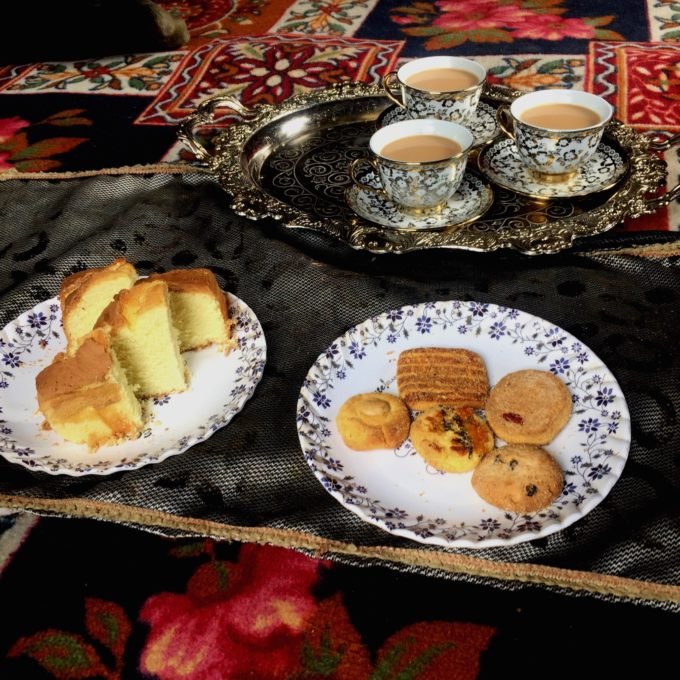
The Ultimate Kashmiri Chai Experience

The Ultimate Kashmiri Chai Experience
Kehwa in Kashmir
“Come to our home for tea?” said a woman, peering out of her wooden house, in the picturesque border area of Gurez Valley that a friend and I were admiring while taking a leisurely stroll. This was the first time I’d been invited to tea on my month-long visit to Kashmir, but it was certainly not the last.
Her warm and inquisitive smile made it hard to decline the invite. We had known her for exactly two sentences. However, this was hardly unusual, as anyone who has been to Kashmir would tell you. On the contrary, if a conversation with a local in the land of Kashmir does not end up with an invitation for tea, you are doing or saying something wrong.
Kashmiriyat, the essence of the Kashmiri people, largely comprises of the warmth and love they extend to strangers. And chai, whether noon chai, milk tea, or kehwa, constitutes a large part of the initiation into the Kashmiri way of life. Also, it is not just the tea that is on offer; it is a whole lot of snacks and a long conversation that follows.
Though noon chai or salt/pink tea is what is commonly consumed there, it is kehwa that bags the title of the ultimate Kashmiri chai experience. A tea made with cinnamon, cloves, cardamom, and other spices along with Kashmiri saffron and almonds, kehwa has been around for hundreds of years. There can be hundreds of ingredients to it, according to locals, who also attest to its medicinal properties. Wealthier households use expensive ingredients in larger quantities when preparing the tea, in addition to a number of dry fruits.
Generous with their heart and the food they offer strangers (who soon become family), the typical Kashmiri session over tea and snacks can be quite overwhelming, to the mind and the body. Kehwa is slowly brewed to a form that sets the mood for unending conversations, accompanied by snacks that could feed one for days.
A cup of the golden-colored kehwa is usually quite sweet, and has a relaxing effect, as I came to learn. A host would argue their kehwa wasn’t perfectly brewed—after all, there is no end to the intricate flavours that a whole lot of aromatic ingredients can make.
Most conversations for me during my kehwa experiences looked like this: they started off with questions about what life looks like for me, then wandered through the socio-political issues that plague Kashmir, and concluded with stories of local folklore, shared upon request.
That was how the experience went in that cosy wooden home in Gurez Valley and as I later discovered, in most kehwa sessions. In between all of the conversation, someone usually brought me some more naan and insisted that I eat it, by dipping a small piece of it into the kehwa. At the Gurez Valley home, the woman, speaking about the locally baked sponge cake and coconut cookies, was among many who had a clear instruction: “You need to eat this!”
Before I could attempt to politely decline, I saw some more kehwa being poured. The woman and all the other members of her family gathered around us. The journey into the evening had just begun.